constituent assembly of india debates (proceedings)- volume vii
constituent assembly of india debates (proceedings)- volume vii
constituent assembly of india debates (proceedings)- volume vii
Create successful ePaper yourself
Turn your PDF publications into a flip-book with our unique Google optimized e-Paper software.
which could be replaced by Parliament at anytime by provisions suitable for the occasion. The biggest<br />
advance made by the Draft Constitution over the Australian Constitution is in the matter <strong>of</strong> exclusive<br />
powers <strong>of</strong> legislation vested in Parliament. While the exclusive authority <strong>of</strong> the Australian Parliament to<br />
legislate extends only to about 3 matters, the authority <strong>of</strong> the Indian Parliament as proposed in the Draft<br />
Constitution will extend to 91 matters. In this way the Draft Constitution has secured the greatest<br />
possible elasticity in its federalism which is supposed to be rigid by nature.<br />
It is not enough to say that the Draft Constitution follows the Australian Constitution or follows it on a<br />
more extensive scale. What is to be noted is that it has added new ways <strong>of</strong> overcoming the rigidity and<br />
legalism inherent in federalism which are special to it and which are not to be found elsewhere.<br />
First is the power given to Parliament to legislate on exclusively provincial subjects in normal times. I<br />
refer to Articles 226, 227 and 229. Under Article 226 Parliament can legislate when a subject becomes a<br />
matter <strong>of</strong> national concern as distinguished from purely Provincial concern, though the subject is in the<br />
State list, provided are solution is passed by the Upper Chamber by 2/3rd majority in favour <strong>of</strong> such<br />
exercise <strong>of</strong> the power by the Centre. Article 227 gives the similar power to Parliament in a national<br />
emergency. Under Article 229 Parliament can exercise the same power if Provinces consent to such<br />
exercise. Though the last provision also exists in the Australian Constitution the first two are a special<br />
feature <strong>of</strong> the Draft Constitution.<br />
The second means adopted to avoid rigidity and legalism is the provision for facility with which the<br />
Constitution could be amended. The provisions <strong>of</strong> the Constitution relating to the amendment <strong>of</strong> the<br />
Constitution divide the Articles <strong>of</strong> the Constitution into two groups. In the one group are placed Articles<br />
relating to (a) the distribution <strong>of</strong> legislative powers between the Centre and the States, (b) the<br />
representation <strong>of</strong> the States in Parliament, and (c) the powers <strong>of</strong> the Courts. All other Articles are placed<br />
in another group. Articles placed in the second group cover a very large part <strong>of</strong> the Constitution and can<br />
be amended by Parliament by a double majority, namely, a majority <strong>of</strong> not less than two thirds <strong>of</strong> the<br />
members <strong>of</strong> each House present and voting and by a majority <strong>of</strong> the total membership <strong>of</strong> each House.<br />
The amendment <strong>of</strong> these Articles does not require ratification by the States. It is only in those Articles<br />
which are placed in group one that an additional safeguard <strong>of</strong> ratification by the States is introduced.<br />
One can therefore safely say that the Indian Federation will not suffer from the faults <strong>of</strong> rigidity or<br />
legalism. Its distinguishing feature is that it is a flexible federation.<br />
There is another special feature <strong>of</strong> the proposed Indian Federation which distinguishes it from other<br />
federations. A Federation being a dual polity based on divided authority with separate legislative,<br />
executive and judicial powers for each <strong>of</strong> the two polities is bound to produce diversity in laws, in<br />
administration and in judicial protection. Upto a certain point this diversity does not matter. It may be<br />
welcomed as being an attempt to accommodate the powers <strong>of</strong> Government to local needs and local<br />
circumstances. But this very diversity when it goes beyond a certain point is capable <strong>of</strong> producing chaos<br />
and has produced chaos in many federal States. One has only to imagine twenty different laws-if we<br />
have twenty States in the Union-<strong>of</strong> marriage, <strong>of</strong> divorce, <strong>of</strong> inheritance <strong>of</strong> property, family relations,<br />
contracts, torts, crimes, weights and measures, <strong>of</strong> bills and cheques , banking and commerce, <strong>of</strong><br />
procedures for obtaining justice and in the standards and methods <strong>of</strong> administration. Such a state <strong>of</strong><br />
affairs not only weakens the State but becomes intolerant to the citizen who moves from State to State<br />
only to find that what is lawful in one State is not lawful in another. The Draft Constitution has sought to<br />
forge means and methods whereby India will have Federation and at the same time will have uniformity<br />
in all basic matters which are essential to maintain the unity <strong>of</strong> the country. The means adopted by the<br />
Draft Constitution are three<br />
(1) a single judiciary,


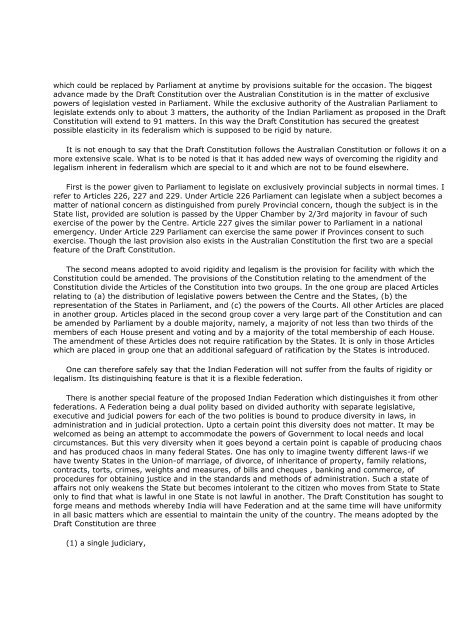
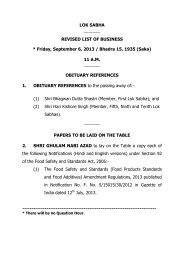
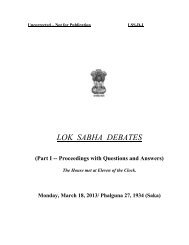

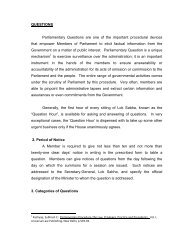
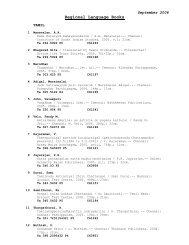

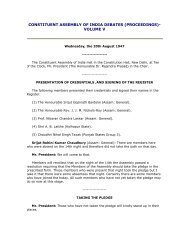
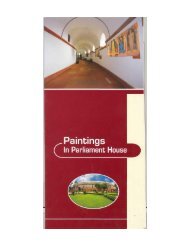
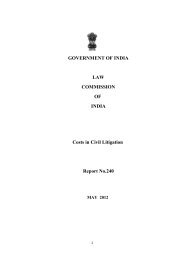
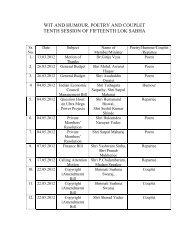
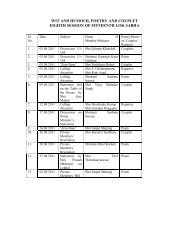

![gÉÉŌ A.]ÉŌ. xÉÉxÉÉ](https://img.yumpu.com/8015720/1/190x245/geeo-aeo-xeexee.jpg?quality=85)
